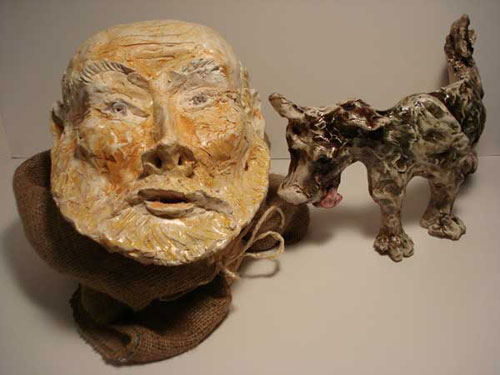
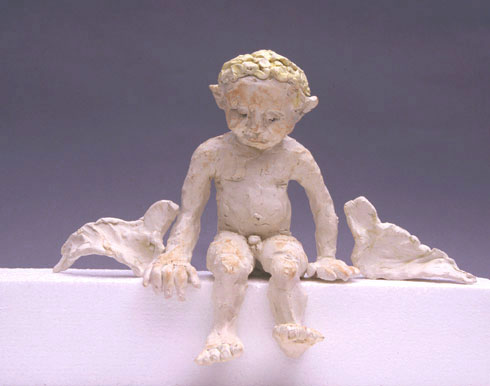
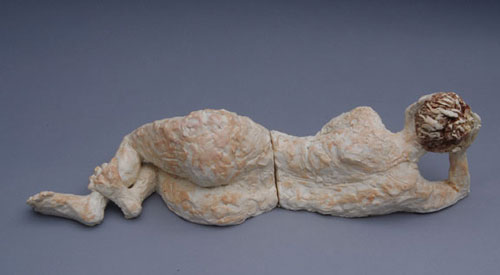
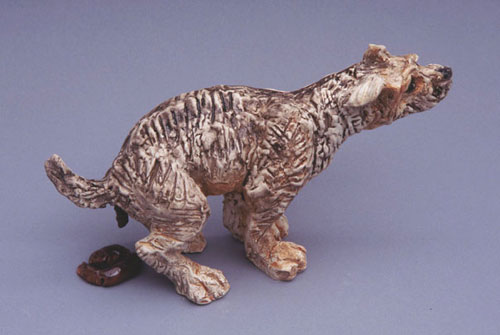

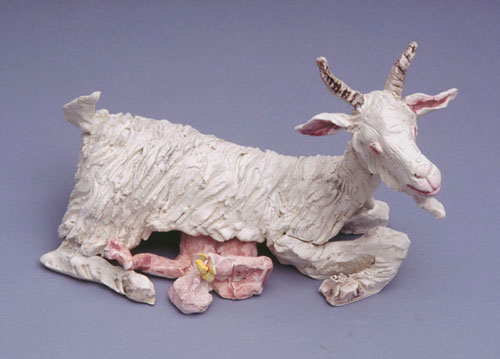
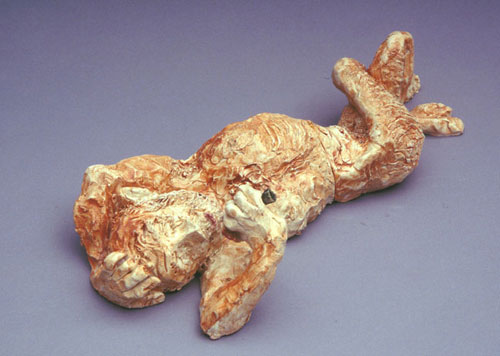
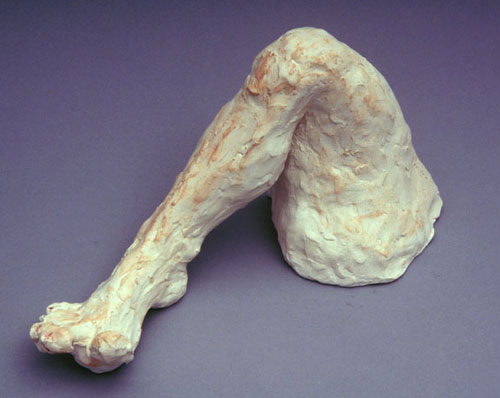
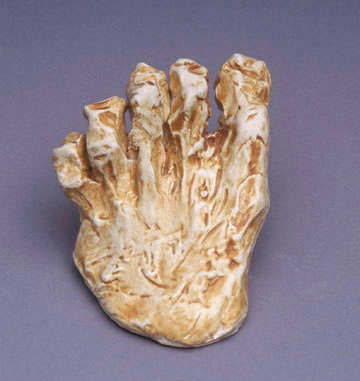
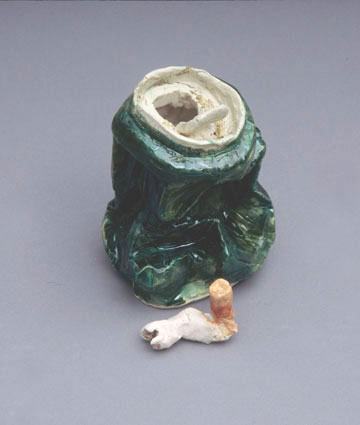
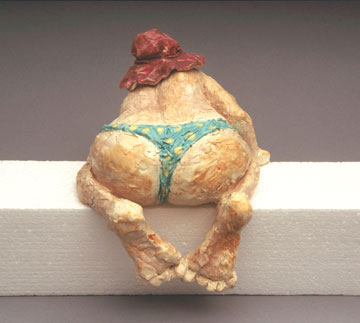
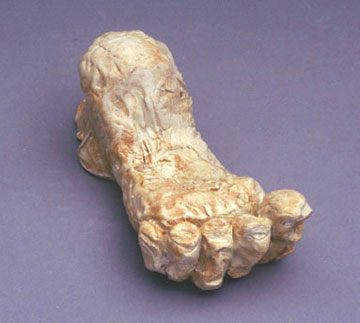
Press release
This exhibition reveals the results of a creative collaboration in paintings and sculptures, a visual dialogue between two artists: Russian-American sculptor, Julia Nitsberg, and Russian-French painter, Vladimir Titov, paired for the first time. They share a common interest to devise a new approach to the picture plane, attempting to intersect painting with sculpture.
Working independently of each other on different continents, Nitsberg and Titov have created a series of works that comment on contemporary trends in art, on painting itself, and on the fascination with lust, decay and decadence in contemporary Russian society.
Inspired by popular Rococo paintings called fêtes galantes, which depicted images of happy lovers, the characters in Titov’s pictures are obviously enjoying each other’s company on an afternoon in the countryside. As a nod to Jean-Honoré Fragonard, Titov uses cheerful, peachy colors and loose brushwork to invoke a sense of unrestrained frivolity. However, in contrast to the beautiful young lovers of the 18th century, the artist captures regular, middle aged people of his motherland in a moment of play. The scenes have long been a favorite with Titov and have become his most popular subject.
Julia Nitsberg’s clay figurines represent the painter and his muse, and other things around that he cares for : angels, animals, flowers, etc. She chose ceramics to evoke the decorative material of the Rococo period, a medium perfect for arabesques and curves, but also because clay has been the sculptor’s principal material since the beginning of time. The bodies are dynamically twisted to imply augmented motion and emphasize musculature. This imitation of Michelangelo’s figura serpentinata makes the sculptures appear 3-dimentional. However, they have been modeled in relief but detached from the background, as if projected from the paintings. Nitsberg developed a special palette of warm pinks, browns and golds in the manner of French artists of the Rococo period to create a logical support for the paintings.
After all the dramatic seriousness of 20th century art and years of neo-gothic, semi-religious images, many artists of the 21st century have begun to look for fun in frivolous subjects - nothing that requires deep thinking or introspection. The art of this “Neo-Rococo” period has also been influenced by video and advertising, short attention-grabbers. This trend for fun has also been partially triggered by the sudden growth of a new wealthy class. Tailored to these lavishly collecting patrons, who are comfortable in the 18th century style and favor light-hearted rather than weighty subject matter in the works of art they consume, new art exhibits a flirtatious undertone that reflects the pastimes of the collector’s daily lives and make great conversation centerpieces at parties.
April 24, 2008